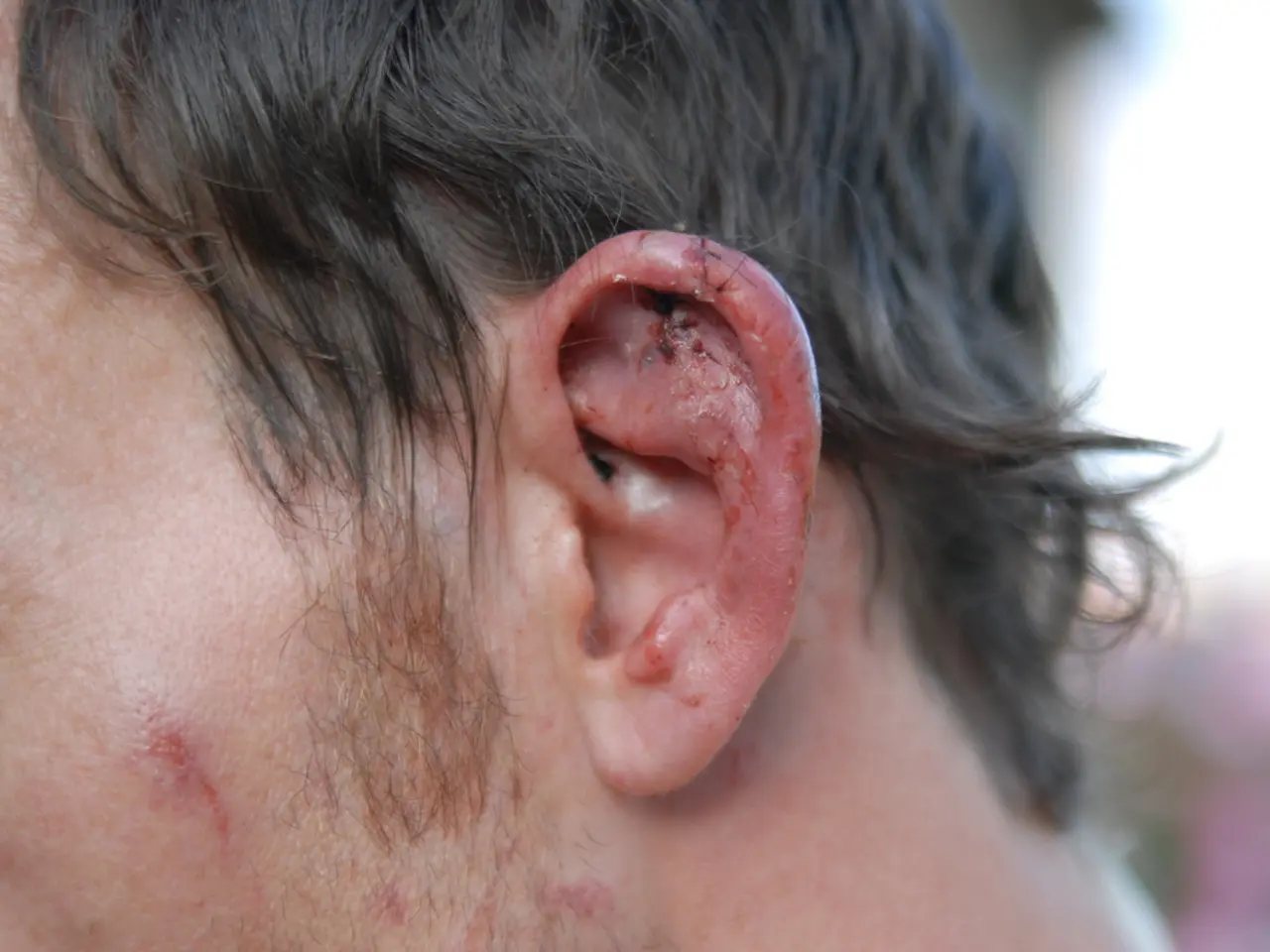Differentiating Thrombocytopenia and Hemophilia: Key Facts Explored
In the realm of blood disorders, two conditions that often capture attention are hemophilia and thrombocytopenia. While they share some similar symptoms, their causes, treatments, and management strategies differ significantly.
Hemophilia Treatments
Hemophilia, a condition characterised by a deficiency in clotting factor proteins, primarily requires treatments that aim to replace or restore the missing factors. In the case of hemophilia A, the deficiency is in clotting factor VIII, and for hemophilia B, it's clotting factor IX.
The mainstay treatment involves intravenous infusions of the missing clotting factor (FVIII or FIX). These can be plasma-derived or recombinant and used either prophylactically or on-demand to prevent or treat bleeding episodes. Recently approved gene therapies, such as Hemgenix (for hemophilia B) and Roctavian (for hemophilia A), offer a potentially long-lasting solution by delivering functional clotting factor genes to liver cells, significantly reducing bleeding rates.
For patients who develop inhibitors to factors, bypassing agents or newer therapies like weekly subcutaneous marstacimab (which showed a 93% reduction in annual bleeding rate) are used.
Thrombocytopenia Treatments
Thrombocytopenia, a condition characterised by a lower than normal number of platelets in the blood, can be acquired and caused by various factors such as exposure to toxic chemicals, certain medications, autoimmune diseases, cancers, infections, conditions that cause blood clots, and having a larger than normal spleen.
In cases where platelet counts are not dangerously low and bleeding is absent, particularly in children, no immediate treatment is necessary, and spontaneous recovery may occur. For immune thrombocytopenia (ITP), first-line treatment often involves oral corticosteroids to suppress the immune system’s attack on platelets. The approach depends on platelet counts, bleeding symptoms, and underlying causes. Treatment may include platelet transfusions, immunoglobulins, or therapies targeting the root cause of secondary thrombocytopenia.
Patients are advised to avoid medications that increase bleeding risk, like aspirin or ibuprofen, and to be careful with activities that could cause injury. A splenectomy, a surgery to remove the spleen, may be necessary for a person with thrombocytopenia if their spleen is retaining too many platelets.
Key Differences
| Aspect | Hemophilia Treatments | Thrombocytopenia Treatments | |-------------------------|-----------------------------------------------------------|---------------------------------------------------------------| | Primary Defect | Deficiency of clotting factors FVIII or FIX | Low platelet count due to decreased production or immune attack | | Treatment Goal | Replace missing clotting factors; enable normal clotting | Increase platelet count; prevent immune destruction | | Main Treatment Modalities| Factor replacement, gene therapy, bypassing agents | Corticosteroids, immunosuppressants, platelet transfusions | | Chronic vs Acute | Often lifelong with prophylactic or gene therapies | Sometimes self-limiting; treatment depends on severity and cause| | Route of Administration | Intravenous infusions or single gene therapy infusion | Oral medications, occasionally transfusions |
In summary, hemophilia treatments focus on supplementing or correcting deficient coagulation factors, often with advanced gene therapies, while thrombocytopenia treatments involve immune modulation and platelet management tailored to the cause and severity of low platelets. Neither hemophilia nor thrombocytopenia can cause each other, but a person can have both conditions.
It is essential to remember that while these conditions may share some symptoms, their causes, treatments, and management strategies are distinct. Consulting with healthcare professionals is crucial for accurate diagnosis and effective treatment.
CBD, often associated with health and wellness, is not directly related to either hemophilia or thrombocytopenia. However, research is ongoing to explore its potential role in managing neurological disorders.
While hemophilia treatments center around replacing or restoring missing clotting factor proteins, science continues to investigate CBD's impact on various medical conditions, including neurological disorders.
As for thrombocytopenia treatments, they mainly focus on increasing platelet count or suppressing the immune system's attack on platelets, rather than using CBD. However, as research progresses, the role of CBD in neurological disorders may provide alternative treatment options for patients with thrombocytopenia who also suffer from these conditions.




